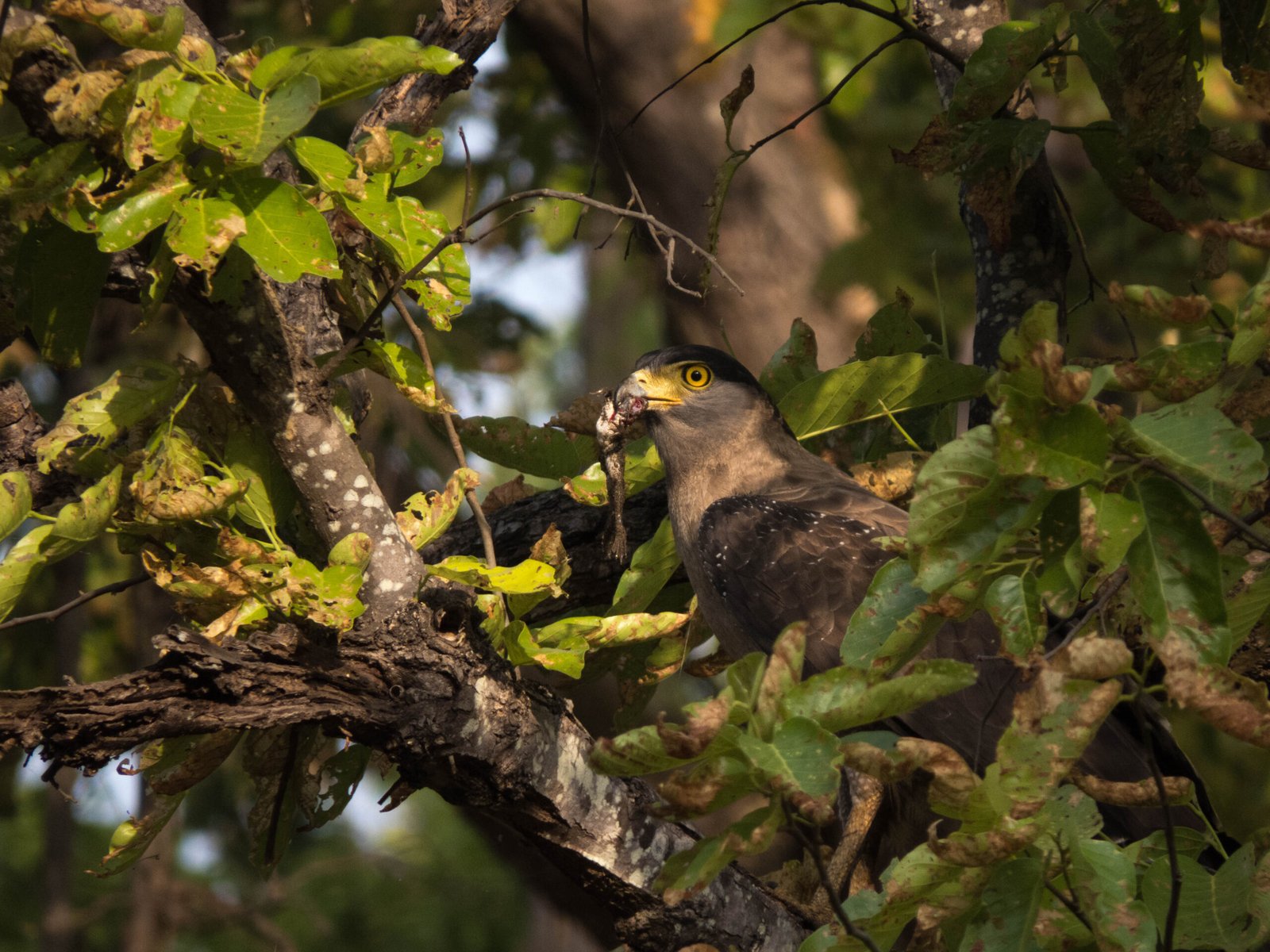It is a universally known fact that water supports life. Whether it is for humans, animals or plants, water plays an important role in any ecosystem. But as the summer is peaking in Kanha, supply of water is running short. During one of my recent safaris, I experienced how tough life is getting for the wildlife in the park.
I was on a morning safari, and it had started to get really warm. We were parked close to a shrinking waterhole, and several birds, mammals and reptiles were visiting the hole to quench their thirst. There was news of a tiger being close by too, and hence we decided to stay at the spot longer, waiting for it to come out to drink water as well.
There were quite a few aquatic creatures around, including frogs and fishes in the water, and some dragonflies circling above, some maybe even laying eggs in the shrinking waterbody. As we were enjoying watching these aquatic animals, suddenly a Crested Serpent Eagle swooped in and took off with a frog, which it decided to feast upon on a nearby tree. No sooner had the eagle left, an Indian Pond Heron followed the suit, and caught a frog for itself. Other birds, including a Wood Sandpiper, a pair of Red-wattled Lapwings and a Citrine Wagtail were all trying their hand (or beak to be precise) at catching some of the smaller aquatic life about the edge of the waterbody.


Finally it got hot enough, and the tiger decided to come out. A subadult male, just over 2 years of age, came out of the bamboo thickets, and sat in the waterbody to cool himself down. Tigers are known to do this, more so in the summer months. Suddenly a female tiger, a mother of three tiny cubs, came out of the bushes and approached the water. Adult tigers are solitary animals and generally do not like the company of each other. So this was extremely strange behaviour. Although there was some aggressive interaction between the two tigers, conveyed through body postures, the female tiger walked passed the subadult male and sat down in the water too. While we were trying to understand this strange behaviour, yet another tiger, this time an adult male, came near the waterhole and made himself comfortable in the water too. This male tiger, probably the father of the subadult tiger and of the cubs of the female tiger there, is also one of the biggest tigers in that area. Now there were three full-grown tigers in the waterhole and one could feel the tension in the air.

If the situation already did not call for something exciting to happen, a massive bull Gaur now started approaching the waterhole. The Gaur must have been extremely thirsty, because even the sight of three tigers in the waterhole did not seem to deter him. We thought that the tigers would not allow him to come any closer, and might even try to take him down. But as he inched closer, the female tiger got up and went into the bushes, probably fearing for the safety of her cubs. The adult male tiger got up next, and we anticipated a chase. But even this tiger moved into the shade of the bushes. The stubborn subadult tiger, probably ignorant of the strength of a Gaur, did not leave the waterhole.

Having made two tigers leave the waterhole, the Gaur was also feeling confident and started showing off his size in front of the subadult tiger. Finally even this tiger had to move out, and the Gaur had the waterhole to himself.

This sighting took up most of our morning safari time, and we realised that we were all hungry as we had not had breakfast yet. So we left the waterhole and headed to the breakfast point in the park. The summers are really harsh on the animals in the forest, but they also give us an opportunity to witness such amazing interaction amongst the animals.
Sachin Sharma
Naturalist, Singinawa Jungle Lodge



